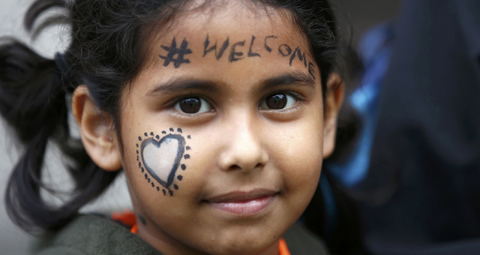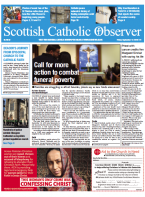BY Peter Diamond | June 21 | ![]() 0 COMMENTS
0 COMMENTS ![]() print
print

Priests hail the contribution of refugees to Scotland’s parishes
Two priests have spoken about the role parishes can play in helping refugees as the UK celebrates national ‘refugee week.’
Refugee Festival Scotland takes place from June 20-30, and a Glasgow priest and the chancellor of Argyll and the Isles Diocese have revealed the work their parishes have done to help welcome refugees, including offering a church hall to be used as a mosque.
Fr Jim Lawlor, parish priest of Immaculate Conception Church, Maryhill, has 23 nationalities in his parish and this week hosted a talk on the refugee crisis in Europe which followed the dismantling of ‘the jungle’ camp in Calais.
“It is quite a diverse population here. At our Sunday evening Mass, four out of six of the altar servers are from a Ugandan family and the other two are Gaelic speakers,” Fr Lawlor said.
Diversity
“The largest ethnic group we have in the parish are Nigerian and in our local primaries about one third of the pupils attending started life outside of the UK.
“In Wyndford, one of the neighbouring parishes, they have a massive Chinese population and are currently celebrating one Mass per month in Mandarin.”
Fr Lawlor this week wrote a letter supporting the visa application of one parishioner who fled Christian persecution in the Democratic Republic of Congo (DRC).
“Any practical steps to help these people should always be taken,” Fr Lawlor said.
“We’ll never be able to do enough for these people. I think one aspect of the high level of refugees and migrants in this part of the city is that there is poor housing here and more often than not that is the defining factor in where refugees are placed.”
Togetherness
However, Fr Lawlor added that there is a richness and togetherness about bringing lots of different people to the celebration of Mass.
“Refugees certainly have brought a cultural richness to our parish: there are countries in Africa I didn’t even know existed before such as Togo,” he said.
“Many of these refugees come from dire situations and persecution but I think it is amazing that even through those circumstances, Christians are being brought closer together.”
‘Closer to the people’
Fr Lawlor believes the Church needs to find creative ways at bringing the ‘mission of God closer to the people.’
He said: “I think small incentives can make a big impact in that sense. It can be as simple as creating a cafe at the primary school for parents to attend after dropping off the children and you have parishioners and volunteers offering practical help and advice for form-filling or teaching English. We need to find creative ways to be beside people.”
A priest from Argyll and the Isles Diocese has also spoke this week of the Church’s role in helping refugees.
Parish support
Fr Michael Hutson, parish priest of St Andrew’s Church, Isle of Bute, said: “We were very involved in the Westminster Government initiative in 2015 when Syrian refugees were resettled around the country.
“Our parish hall was used for the Syrians to socialise and the children to play games but it was also originally where various partners and agencies attended to help them.
“On a Friday they would use the hall as their mosque before they found a more suitable premises at a later date.”
Free from threat
He added: “Before they arrived in Bute the parish fundraised a lot and were able to provide every eligible Syrian child with cycling proficiency lessons, a brand new bike and helmet, so they could cycle from place to place in this beautiful part of the world, free from the threats they had left behind.
“As a parish it really was our privilege and great joy to be able to answer Pope Francis’ call for every parish in Europe to play a part in helping refugee families fleeing war and persecution.
“We were able to do that and the fruits of it are that those people are really diversifying and settling in well to life here despite the hardships and trauma that they left behind.
“A total of 24 families have been re-homed on the island since December 2015. I think about five have left and then another family was received here after that so it’s a sizable amount still living here and settling in. It’s a good place to bring up children.
“I know there were some people who were perhaps expressing concern and reluctance to help these people at first but there has been a real warmth ever since the first child was born, people’s hearts just melt.”










